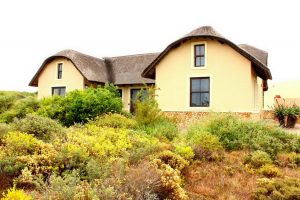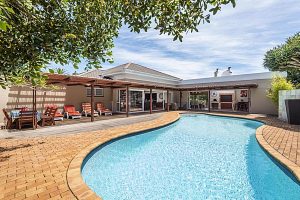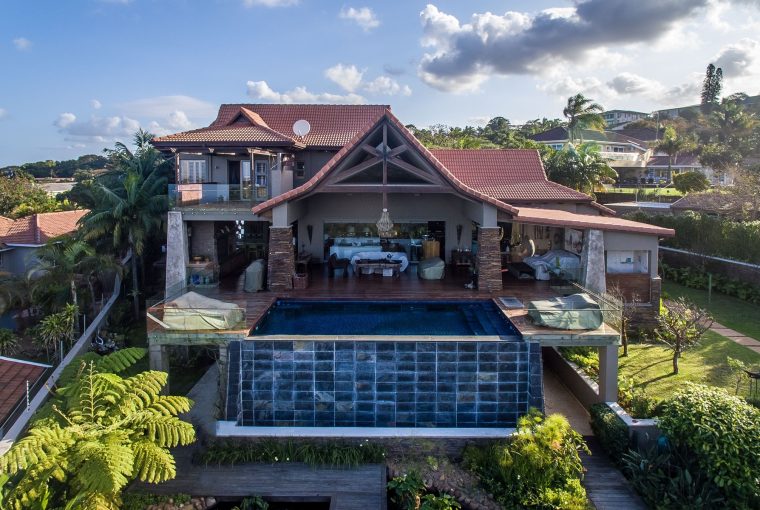As the world grapples with the uncertainty surrounding the long-term implications of Covid-19, there is a measure of agreement on one thing – the global pandemic has fast-tracked numerous trends which were already emerging prior to the crisis.
Says Anthony Stroebel, head of New Business Development for Pam Golding Properties and a director of the Green Building Council South Africa: “Remote working, co-living, dark kitchens and online retail are just some of the trends identified during the pre-Covid years. Several of these have now been more widely adopted, as companies worldwide scramble to adjust and survive in the post-Covid environment.



“While the business sector is likely to change many of the ways in which it operates in the new post-Covid world, households are also likely to reconsider how they live – both in terms of the homes they live – and now work – in, and their consumption patterns.
“Scientists have long warned that our resource-intensive lifestyles are unsustainable and that the relentless destruction of our natural environment would ultimately unleash a global pandemic – a prospect that few of us could imagine until Covid-19 and the ensuing worldwide lockdowns effectively brought the entire global economy to a standstill last year.
“Even now, many hope that the global vaccine programme will ultimately allow a return to ‘normal’ towards year-end. However, it is far more likely that life will be forever recalibrated amidst a growing acknowledgement that the consequences of the prevailing ‘endless growth’ economic model that prevails in much of the world are an increasingly extreme climate and a heightened risk of global pandemics.
“In this regard, Kate Raworth’s ‘Doughnut Model’ comes to mind, whereby Humanity’s 21st century challenge is to meet the needs of all within the means of the planet, in order to ensure that no one falls short on life’s essentials (from food and housing to healthcare and political voice) – namely, the ‘centre’ – while ensuring that collectively we do not overshoot our pressure on Earth’s life-supporting systems, on which we fundamentally depend – the ‘crust’. This moment in time therefore feels like somewhat of a tipping point.”
Buildings and their construction together account for 36% of global energy use and 39% of energy-related carbon dioxide emissions annually, according to the United Nations Environment Programme. As a result, real estate is under the spotlight.
While this presents numerous challenges it also provides an opportunity for real estate investors to make a significant difference.
South Africa is already a leader in the growing global green building sector. Initially the focus has been on the commercial sector – and the benefits are already evident. It is estimated that green buildings reduce operating costs by 8% on average – primarily through reduced energy and water usage as well as lower long-term operating and maintenance costs[1] .
According to the most recent MSCI Green Property Index, certified green office buildings, being perceived as low risk investments, yielded better investment returns than non-certified buildings, and enjoyed lower vacancy rates.
Furthermore, worldwide evidence is growing that green buildings actually deliver a multitude of benefits beyond their financial returns – helping to address climate change, creating thriving, sustainable communities and driving economic growth through the creation of new jobs and industries.
Adds Stroebel: “With many people spending the majority of their time indoors, the importance of a healthy building is self-evident. There is a growing awareness that the quality of our indoor environments plays an increasingly important role in our overall productivity, health and wellness.
“While this was traditionally eight hours a day at our place of work, making a green office environment important, Covid has made the home a more important consideration – partly because of lockdown but also, in the longer-term, because of the rise of remote working. This will in all likelihood accelerate the adoption of green building in the residential sector.
“The importance of wellness is a global trend which has been gaining momentum for several years now – particularly among high net worth individuals – and its adoption is likely to be reinforced by the physical and mental health issues exposed during the current global pandemic.”
The Global Wellness Institute (GWI) recently released a report – “Build Well to Live Well” – which quantified for the first time the global and regional lifestyle real estate market. According to the report, the next frontier in residential real estate is design and redevelopment that places people’s health at its core. This is a rapidly growing global market, registering a growth rate of over 6% per annum since 2015, which will be sustained into 2022.
In the US, the percentage of architectural firms expecting to have more than 60% of their projects certified green has grown from 16% in 2016 to 32% in 2018 – and is expected to grow to 45% by 2021. As more homeowners build green homes, so more people will develop innovative, new, green materials to take advantage of this growing marketplace opportunity.
Says Stroebel: “While a green home is important for our health, it is also crucial for our financial well-being, perhaps particularly in South Africa, as we share the global awareness of the urgent need to live a more sustainable life – both to address the imminent threat posed by climate change but also to offset ever-rising utility costs and increasingly erratic service delivery.
“With household incomes under increasing pressure due to a sustained period of sluggish economic growth, and the massive costs to the economy of repeated lockdowns, homeowners face relentlessly increasing maintenance, utility and security costs.”
Despite its massive solar potential, South African’s electricity tariffs have increased by more than 510% between 2007 and 2020 – with the prospect of a further 15% increase in tariffs in April this year. Similarly, average municipal water tariffs have soared by almost 1 300% between 1996 and 2020.
Adds Stroebel: “The appeal of a green home is that, after an initial capital outlay, the greater efficiency of both energy and water consumption not only saves costs but also provides a measure of protection against load shedding and increasingly frequent and severe droughts – while contributing to the fight against climate change.
“Initially those seeking a greener lifestyle could either retro-fit their own homes or could purchase or rent a home in a lifestyle estate or a green mixed-use precinct. It’s already becoming apparent that those with the means to do so, are increasingly looking to become more self-sufficient by living completely off the grid.”
A good example of off-the-grid living is Elephant Rock Eco Estate, set among the private nature reserves of Hoedspruit in Limpopo, which has introduced the ‘house zero’ concept, a modular building system for premium off-grid homes which meet these criteria: all components are factory manufactured with building site work limited to speedy erection and all components in line with the latest energy efficiency technologies and standards, and 100% energy grid independence, with the roof an active power station, generating all the energy required for electricity and heating.
Stroebel says that property owners are increasingly realising that incorporating green living design into their homes is not only significantly contributing to the value of what, more often than not, is their primary asset, but also increasing the ‘sellability’ if and when they decide to move. A green home typically sells at a premium to other regular homes of a similar size and location and more than likely also sooner.
“As we adjust to life in the post-Covid world it seems green building will finally be embraced by the mainstream. While sustainable green living offers welcome utility efficiencies it is essentially a more holistic concept. Stretching from upstream considerations such as building materials and design, all the way downstream to energy consumption and waste generation, a sustainable lifestyle is – at its heart – about the quality of life and the future health of the planet.”
This article first appeared in the Green Building Council of South Africa’s latest newsletter.
[1] https://www.absa.africa/world-economic-forum/africa/absa-at-wef/op-ed-piece-1/

